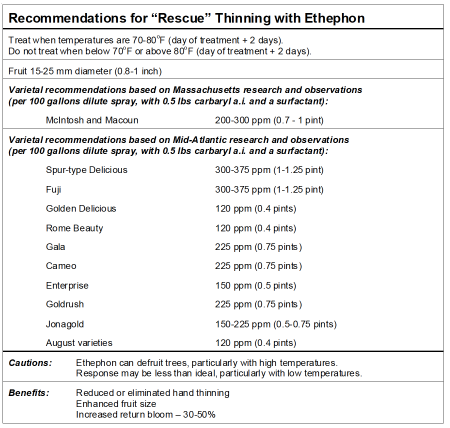
F-129R: Late-season "Rescue" Thinning with Ethephon
We all experience occasional failures during the normal apple thinning period from petal fall through the 12mm stage. Once fruit are larger than 12 mm, there are very few options for fruitlet removal. The most commonly utilized technique in New England is hand thinning. Hand thinning is usually performed in early July. Because of this timing, it has very little effect on return bloom the following year, since most flower bud formation occurs in June. So, it may be possible to gain some fruit size with hand thinning, but if the set is heavy before hand thinning, bloom may be light the next year and trees may even become biennial.
Another thinning option is to use a late-season (early to mid June) ethephon treatment. Ethephon works by breaking down to form ethylene in the plant tissues. It can be very effective as a “rescue” treatment, but we have had very little experience with ethephon thinning in New England. Below are some general guidelines based on five years of research in Massachusetts and research and observations in the mid-Atlantic area. It is important to understand that Ethephon can be tricky. If conditions or concentration are wrong, then complete crop removal can occur, so be careful!
Issued by University of Massachusetts Extension, Nancy Garrabrants, Director, in furtherance of the acts of May 8 and June 30, 1914. University of Massachusetts Extension offers equal opportunity in programs and employment. F-129R:5/09-500
